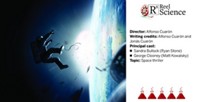Advertisement
Grab your lab coat. Let's get started
Welcome!
Welcome!
Create an account below to get 6 C&EN articles per month, receive newsletters and more - all free.
It seems this is your first time logging in online. Please enter the following information to continue.
As an ACS member you automatically get access to this site. All we need is few more details to create your reading experience.
Not you? Sign in with a different account.
Not you? Sign in with a different account.
ERROR 1
ERROR 1
ERROR 2
ERROR 2
ERROR 2
ERROR 2
ERROR 2
Password and Confirm password must match.
If you have an ACS member number, please enter it here so we can link this account to your membership. (optional)
ERROR 2
ACS values your privacy. By submitting your information, you are gaining access to C&EN and subscribing to our weekly newsletter. We use the information you provide to make your reading experience better, and we will never sell your data to third party members.
Education
Newscripts
Bone earthquake, A word to the wise, Star Trek' marks 40th anniversary
by Marc S. Reisch
September 18, 2006
| A version of this story appeared in
Volume 84, Issue 38
Bone earthquake
Researchers at Purdue University and the University of Toledo are building a device to detect small cracks in bone that can lead to hairline stress fractures.
Cracks form in bone when collagen fibers fail, producing sound waves that cause a rippling motion on the skin's surface. "This is the same thing that happens during an earthquake, but on a microscopic scale and at a higher frequency," says Purdue bioengineering professor Ozan Akkus.
"Instead of an earthquake-size opening, these bone cracks are about a tenth of a millimeter wide," Akkus says. Using the same basic listening technique seismologists use to measure earthquakes, the researchers hope to create a wearable device to alert people when stress fractures are imminent, so they can stop long enough to heal.
Who would benefit from such a monitoring system? Racehorses would. About 70% of thoroughbreds experience fractures, says Akkus. Soldiers going through basic training could benefit. Up to 20% of recruits experience stress fractures known as shin splints.
Flexible polymer-based sensors incorporated into athletic apparel could monitor areas most susceptible to fractures, adds Akkus. Others who could benefit include osteoporosis sufferers, athletes, and dancers.
A word to the wise
Anu Garg, a computer engineer from northern India, e-mails "word a day" alerts to English-language lovers worldwide. Recently, a series of e-mails went out to the 600,000 subscribers of A.Word.A.Day containing words with a chemistry theme.
Why this theme? Garg explains, "With their long, exotic-sounding names, chemicals often frighten us. Yet, all of us (like everything else in the universe) are made up of thousands of chemicals. No wonder, when we meet a person, the first thing we look for is chemistry."
The first installment in the weeklong parade of chemistry-related words showcased the word "bromide," a noun defined as a tired or meaningless remark or a tiresome or boring person. The word comes from the Greek bromos, meaning stench.
Since potassium bromide used to be taken as a sedative, any statement that was intended to be soothing acquired the name bromide. Over time, the meaning changed so that any commonplace or tiresome remark came to be known as a bromide.
Garg's website, Wordsmith.org, provides other services, including e-mail access to a dictionary, thesaurus, and an anagram unscrambler. Using the Internet anagram server at the site, you can discover that an anagram for dormitory is "dirty room," and an anagram for chemistry is "icy therms."
'Star Trek' marks 40th anniversary
The original television series "StarTrek" was first broadcast in the U.S. on Sept. 8, 1966. To mark the occasion, a number of actors from the series attended a celebration and conference at Seattle's famous Space Needle, cosponsored by the city's Science Fiction Museum.
The series offered an optimistic vision of a future in which racial divisions have been overcome and a peaceful, technologically advanced human race explores new worlds and seeks new life forms. "Star Trek" lasted three years and followed the spaceship USS Enterprise and her crew on their voyages to the stars. The original spawned four other "Star Trek" television series, 10 movies, and numerous books.
According to one news account, "Star Trek" was so popular that NASA, bowing to a request from 400,000 fans in 1976, named its first space shuttle Enterprise after the spaceship from the TV series. More recently, British entrepreneur Richard Branson named the first suborbital vehicle in his planned Virgin Galactic spaceliner fleet the VSS Enterprise.
Actor William Shatner played Capt. James T. Kirk and led the original "Star Trek" crew, along with his efficient science officer, the half-Vulcan Spock, played by Leonard Nimoy. To this day, Nimoy, who is now 75 years old, says he still meets children who say they love his character and people who say they pursued a career in science because of Spock.






Join the conversation
Contact the reporter
Submit a Letter to the Editor for publication
Engage with us on Twitter